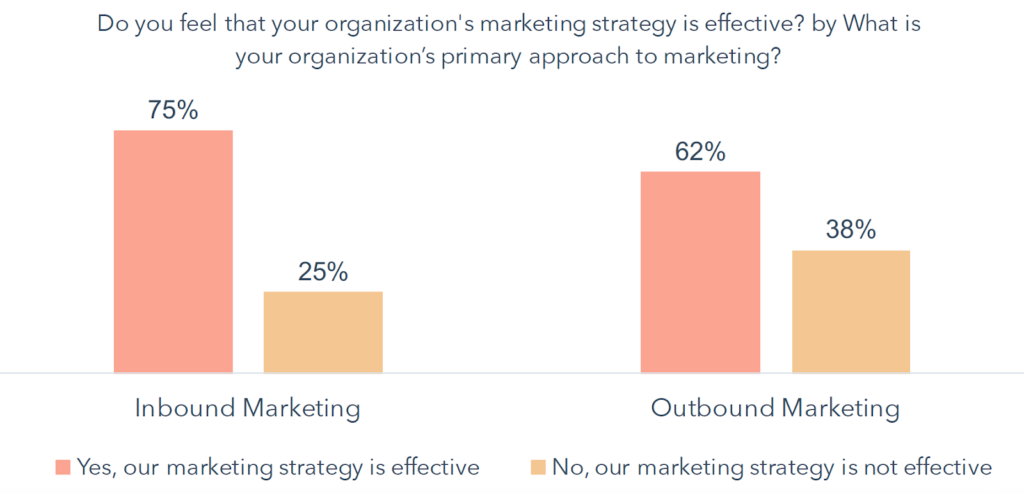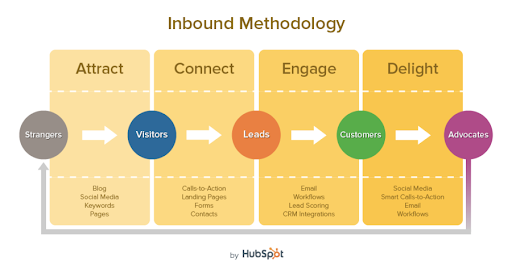As an international marketing manager, you are often challenged by finding new high-quality leads in the new markets their company is opening.
For example, let’s suppose you work for a company expanding into Latin America. Wouldn’t it be great to receive thousands of new web visits every month? Hundreds of people engaging with your content and turning into leads?
International marketing manager, you are not alone. Lead generation in Latin America is a day-to-day challenge for many marketing professionals, and traditional tactics don’t seem useful in today’s business world.
But not all is lost (thank me later). Inbound marketing is becoming a common strategy to build a stronger relationship with your customers, where they see your company as one that adds value. Allow us to explain a bit further.
Interested in Applying Inbound?
Download Our Free Assessment to Learn If Your Brand Is Ready for Inbound Marketing
What is Inbound Marketing?
According to Hubspot, Inbound marketing is a business methodology that attracts customers by creating valuable content and experiences tailored to them.
Inbound marketing strategies aim to build a connection with your prospects by first turning them into sales leads, then convert them into customers, and after they buy that first product or service from your company into promoters of your brand.
Today, thanks to the internet, customers, and consumers are empowered more than ever because they are no longer passive just waiting in their office or home for your company’s information to come to them by mail, phone, a sales call, or advertising.
Think for a moment how you go about making a buying decision.
Before talking to a salesperson, you surely do your online research to initially define a problem and then weigh on the products or solutions that best answer the problem you are trying to solve.
Finally, after consuming information, you decide what the best solution or vendor to solve your problem is.
At this point, it is beneficial to differentiate inbound tactics from outbound practices. Traditional marketing (outbound) pushes content at prospects, without segmenting the information according to the characteristics of the people receiving the information.
Inbound, instead, offers prospects reciprocal value in exchange for their time and attention by providing relevant, helpful and engaging content at each step of their journey.
Read Our Guide: Digital Marketing For B2B Brands
What Makes Inbound Marketing so Effective?
There are a variety of reasons why your company should consider transforming its conventional outbound marketing programs to strategic inbound marketing initiatives.
Consumers do lots of online research to find answers to their business problems and use it to build their understanding of the product or service they are interested in purchasing.
Prospects will review multiple pieces of digital information provided by your company to evaluate the company’s credibility, market leadership position, and value.
Due to inexisting customer research, traditional outbound marketing assumes in many cases that any consumer out there with a budget is a potential sales lead, but that is not the case.
There is an ideal customer for each product or service offered by your company, and your marketing efforts should attract, convert and delight that prospect to build an on-going relationship with your brand.
Inbound marketing focuses on educating your customers, not just selling them a one-time offering. You want to position your company as an industry expert and provide education opportunities to improve your customers’ understanding of their industry and its challenges.
Thus, your company will position itself as a thought leader by providing relevant content that your customers will access at their convenience when they are actively researching information to fill a need for their business.
The chart below about the State of Inbound Marketing prepared by HubSpot compares the effectiveness of organizations using inbound marketing versus traditional outbound marketing. It illustrates that in many regions of the world, inbound marketing is more effective in connecting brands with customers than outbound marketing.

What Are the Key Elements of a Solid Inbound Marketing Program for Latin America?
There is no single answer to this question but most inbound marketers will agree that the key elements listed below will get you started on the right path to implementing a successful inbound marketing plan.
Identify Your Target Audience
Upfront strategy and planning will identify your key prospects and help you align your communications with key targeted audiences your company is trying to engage with.
This is an important initial step and you need to take the time to speak with team members who interface daily with your customers to gather their knowledge of customer requirements and buying habits.
If you don’t take the time at this step to correctly identify your target audience, much of your posted content will not be relevant or interesting to the people coming to your company website.
Create Fresh and Relevant Content
The content your team posts to the company internet must create a relationship with your customer. Content should inform, educate, and at times even entertain your audience as they look for a company to help them solve their business needs.
Good content means producing information that responds to the buyer personas your team has developed and responds to the stage they are in during the buying cycle.
The content should also be optimized to appear in search engines so your company’s information rises to the top of most web inquiries by your customers.
Program Management
A successful inbound marketing program has many moving parts. For your program to be effective, relevant and evolving you will need to identify team members to manage the variety of elements that make up your inbound programs.
The inbound marketing tactics must be integrated into the various elements within the Latin American marketing plan so they can build on each other and improve as your team learns from the feedback received from customers.
It’s a continuous process that needs to evolve as the requirements of your key customers change. You can be confident in following the path your customers are laying out for you as you monitor their responses to your posted content.
Inbound Marketing with Passion
We want to close this piece by encouraging you to develop and implement your inbound marketing strategy with passion.
Your objective is to provide your customers with the best experience ever with your company by giving them relevant, creative, and thought-provoking content that helps them improve their business.
At this point, you cannot shortchange the process by not spending the time and resources to provide your customers with fresh, relevant content that helps them learn about your company and the industry.
Be strategic, be relevant, refresh your information often, and monitor the results. Enjoy the journey; you’ll be rewarded by engaged customers who relish the information your team is providing and readily promote your brand to their customers and business associates.










